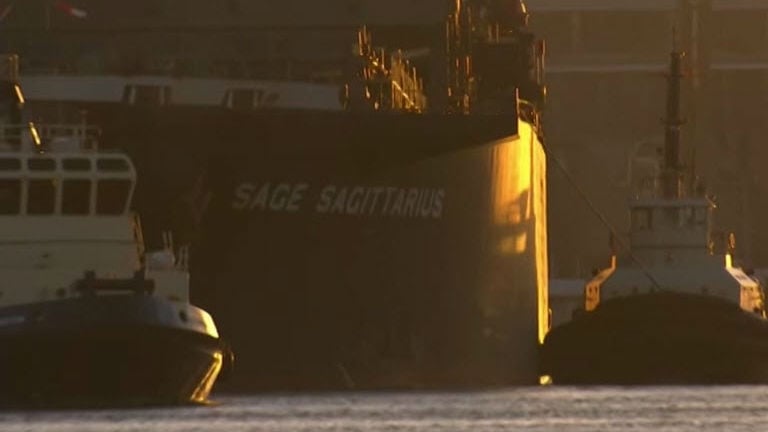Death Ship: What the Blood Patterns Show

The Australian inquest into two of the deaths on board the Sage Sagittarius, dubbed the death ship, resumed on Monday with an examination of the forensic evidence gathered after the chief engineer’s death. The inquest heard that foul play could not be ruled out.
Hector Collado, 57, died as a result of an 11-meter (36 foot) fall on board the bulk carrier in September 2012. He was the second of three men to die on board the Sage Sagittarius between August 30 and October 6. The first was chief cook Cesar Llanto who disappeared from the ship as it sailed towards Australia, and the third, outside the inquest’s scope, was Japanese safety superintendent Kosaku Monji who was crushed to death in the vessel’s conveyor belt machinery.
Blood evidence recovered from the storeroom where Collado died did not rule out the risk of foul play, according to New South Wales forensics officer Detective Sergeant Shawn Harkins.
Harkins told the coronial inquest that seemingly undisturbed blood drops left by the engineer’s injury did not mean his death was accidental, although he had told the inquest previously that the blood evidence did not necessarily show evidence of an attack.
Lawyer David Dalton, representing the International Transport Workers Federation, asked Harkins if the engineer could have been struck then guided to and over the railing.
If the engineer was struck just once by an attacker, Dalton asked, and the attacker guided the now injured engineer backwards towards a railing, was there evidence to dispute it?
Harkins said the evidence did not go against the scenario. It showed Collado was “upright and bleeding” and moving towards the railing. There was no evidence of a struggle.
The Suspicious Disappearance of Chief Cook Cesar Llanto
The inquiry also heard that the disappearance of the chief cook was treated as an alleged murder by the Australian Federal Police.
Detective Sergeant Nuckhley Succar was the case officer for the investigation into how Llanto vanished on August 30, 2012, as the ship sailed along the Queensland coast.
Succar was asked if he believed Llanto accidentally fell off the ship. “I wouldn’t say it was an accident,” he answered. “I think it was highly suspicious.”
Asked if he believed Llanto had taken his own life, he said “No.”
His opinion was based on having interviewed crew members, read the forensic reports and viewed other evidence.
NYK Alert
The inquest also heard that shipowners NYK Line registered concern about Llanto’s disappearance. NYK Australia’s Shigehiko Ochiai sent an email to fellow executive Jason Glynn asking him to take action because he feared there could be a threat on board.
“NYK Tokyo has organized crisis management to fix this incident because there is a few possibility of murder,” Ochiai wrote in the email. When questioned about this email, Glynn told the inquest he was not overly concerned because he thought it was a translation error.
Hurried Interviews
The Australian Federal Police boarded the ship in Port Kembla on September 7, a week after Llanto disappeared and three days after NYK staff joined the crew.
A deal struck between the Australian Federal Police and NYK Line meant that the investigators had one day to interview the crew. This arrangement was made to avoid the costs associated with delaying the vessel.
Succar conducted interviews from 6am to 11pm, and was often “hurried up” mid-interview.
The ship then sailed to nearby Newcastle where Collado then suffered a blow to his skull before falling to his death on September 14.
The Inquest Continues
The inquest is expected to hear more evidence regarding the blood trails left by Collado at the time of his death and will continue until Friday.
